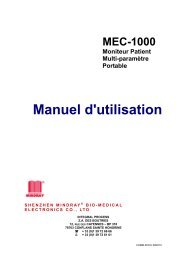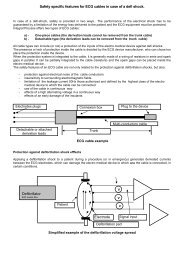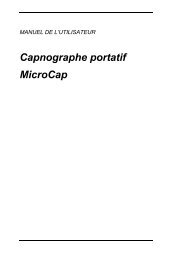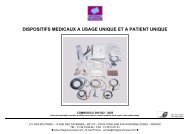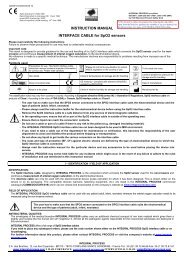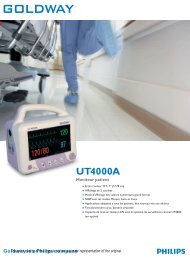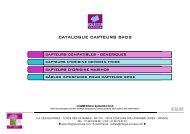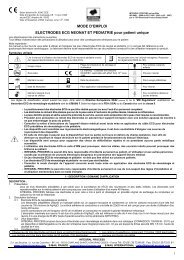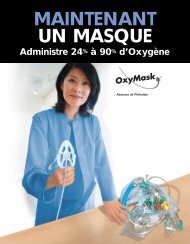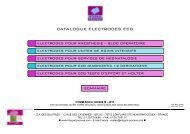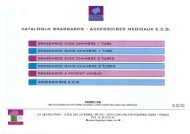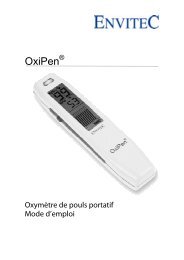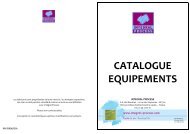TNO Finger Pressure Reference Guide - Integral Process
TNO Finger Pressure Reference Guide - Integral Process
TNO Finger Pressure Reference Guide - Integral Process
Create successful ePaper yourself
Turn your PDF publications into a flip-book with our unique Google optimized e-Paper software.
<strong>TNO</strong> <strong>Finger</strong> <strong>Pressure</strong> <strong>Reference</strong> <strong>Guide</strong> 38in an environment at room temperature at least 15 min before the start of ameasurement, especially in winter time. It is important not only to keep the handand fingers warm, but also the arm and neck.• Awake subjects should be comfortable.• Try to distract the attention from the measurement if the subject is nervous.• Explain the subject, before starting a measurement, that only a slight pulsationin the cuffed finger is felt during the measurement.• Always inform the subjects that interruptions in the pulse can be felt that aredue to the physiological calibration (Physiocal) which is performed atintervals.• It is recommended to follow a fixed protocol during an ambulatory bloodpressure measurement. Try to define periods with a predefined activity, suchas sleeping, sitting, walking etc.• Ask the subject to write daily activities in a diary, or write this informationduring the experiment.Continuous blood pressure is often more variable than expected. If you areinterested in a detailed blood pressure response ask the subject to refrain fromspeaking during the measurement and explain the subject that movements of handand fingers, laughing, coughing etc. may cause waveform artifacts in the fingerblood pressure signal.4.7.2 Diagnostic displayIf the subject has cold hands, e.g. in case of vaso-constriction, it is useful toobserve the plethysmographic values in the display by pressing the FINGER keyon the Portapres control unit. The control unit then may show: V=312V: 34 GN 68in its lower display line, cf. the Portapres User’s <strong>Guide</strong>. The V= value representsthe total amount of infrared light coming through the finger. The V: valuerepresents the pulsatile component, i.e. the changes in finger arterial diameter, cf.Figure 2.3.If the pulsatile component remains small (e.g. less than 5) during the start-upprocedure the artery is strongly contracted and a good pressure measurement isdubious. The artery usually relaxes after a few minutes of monitoring. Therefore, itmakes sense to continue a measurement, once started, in this situation to relax thecontraction of the smooth muscles around the finger artery. If the total amount oflight V= does not change during the procedure the finger is practically bloodless.On a normal finger V= may as much as double between zero pressure and thehighest pressure during the start procedure.



